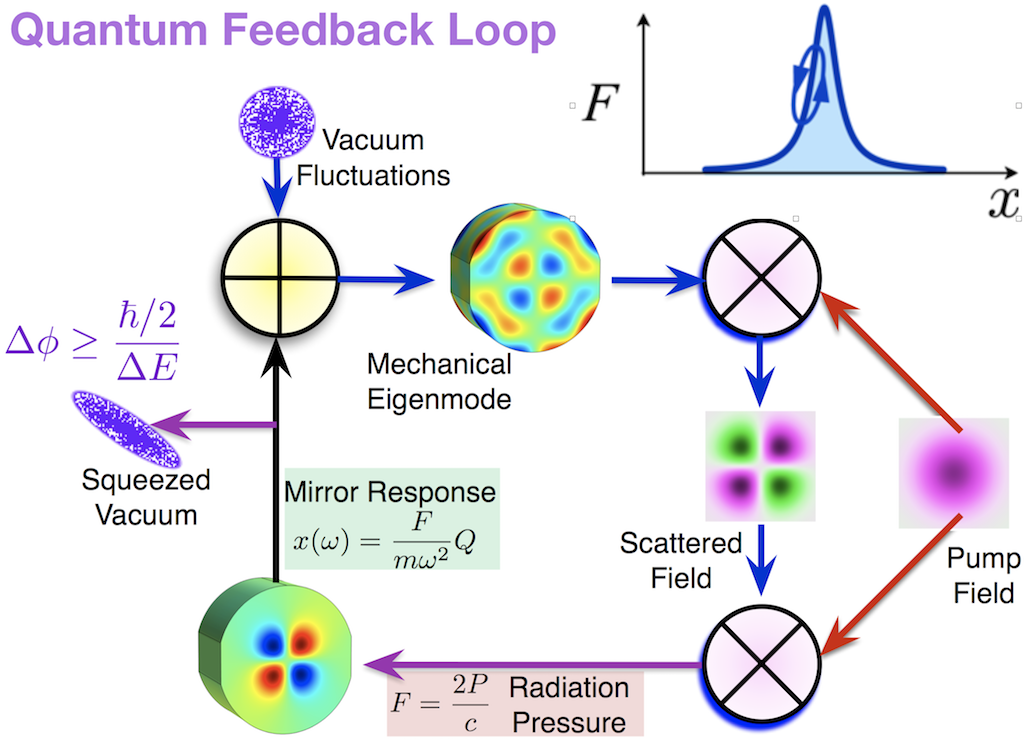Quantum Information Limits of a Classical Sensor
Return to all Research Topics
Quantum Information Limits of a Classical Sensor
 The Heisenberg Uncertainty Principle (HUP) constrains the product of
the uncertainty for two conjugate variables in any measurement.
From this comes the well known quantum principle that you 'cannot know
the position and momentum of a particle simultaneously with arbitrary
precision'
(cf. Feynman 37-1).
The Heisenberg Uncertainty Principle (HUP) constrains the product of
the uncertainty for two conjugate variables in any measurement.
From this comes the well known quantum principle that you 'cannot know
the position and momentum of a particle simultaneously with arbitrary
precision'
(cf. Feynman 37-1).
 At Caltech, we are working on a few projects to push the limits of measurement by exploiting this "loophole".
At Caltech, we are working on a few projects to push the limits of measurement by exploiting this "loophole".
- Waveguide Squeezing: making a ultra-compact setup that can be fiber coupled, put in vacuum chambers, and sent into space.
- Using the opto-mechanical, radiation pressure mediated feedback in laser interferometers to make a device that squeezes itself and thereby avoids the Poisson statistics in standard quantum limits.
- Engineering of strong opto-mechanical quantum feedback to amplify the signals and avoid the degradation and decoherence of the entangled light.
Publications
| "The Energetic Quantum Limit", by Braginsky, Thorne, Khalili https://www.aip.org/history/exhibits/einstein/essay-brownian.htm< /a> |
| "Evading Quantum Mechanics", by M. Tsang and Carlton Caves PRX (2012) |
| "Towards the Fundamental Quantum Limit of Linear Measurements of Classical Signals", by H. Miao, R. Adhikari, Y. Ma, B. Pang, Y. Chen, PRL (2017) |